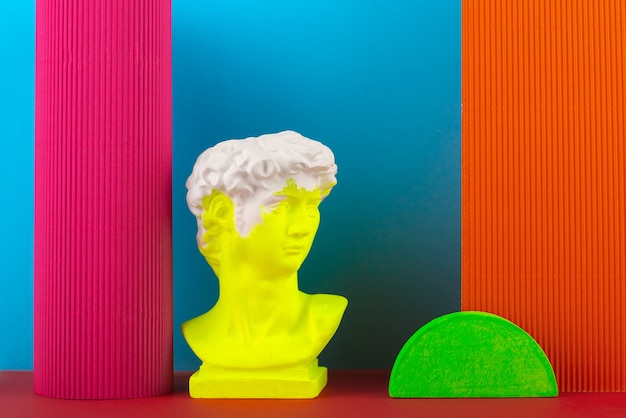Fascinating Facts about Salvador Dali

Salvador Dali was born on May 11, 1904, in Figueres, Spain.
Dali had an eccentric personality and was known for his flamboyant mustache.
Dali’s iconic painting The Persistence of Memory features melting clocks.
Dali was influenced by Sigmund Freud’s psychoanalytic theories and incorporated them into his artworks.
Dali was expelled from the Academia de San Fernando in Madrid due to his disruptive behavior.
Dali’s artwork often contained surrealistic elements and dreamlike landscapes.
Dali often referred to himself as the divine Dali and believed in his own genius.
Dali collaborated with famous fashion designer Elsa Schiaparelli to create a lobster telephone.
Dali designed the logo for Chupa Chups, a popular Spanish lollipop brand.
Dali was fascinated by optical illusions and incorporated them into his artwork.
Dali had a fear of grasshoppers, which he often included in his paintings as a symbol of anxiety.
Dali’s wild imagination and strange behavior made him a controversial figure in the art world.
Dali’s painting The Elephants showcases his interest in the subconscious mind.
Dali was a lover of all things extravagant and enjoyed indulging in luxury.
Dali created a piece called The Sacrament of the Last Supper which features a unique interpretation of the biblical event.
Dali’s collaborations extended beyond art, as he worked with filmmakers such as Alfred Hitchcock and Walt Disney.
Fascinating Facts about Salvador Dali part 2
Dali’s artwork often played with the concepts of reality and illusion.
Dali embraced unconventional techniques and mediums, experimenting with performance art and sculpture.
Dali’s iconic image became synonymous with surrealism and inspired many artists to explore the unconventional.
Dali’s autobiography, The Secret Life of Salvador Dali, revealed his idiosyncratic thoughts and experiences.
Dali’s love for his wife, Gala, greatly influenced his artwork and inspired many of his famous paintings.
Dali had a fascination with exploratory science, which is evident in his painting The Discovery of America by Christopher Columbus.
Dali’s eccentric public appearances and media stunts added to his larger-than-life persona.
Dali’s art often depicted distorted or elongated human figures, creating a sense of unease and discomfort.
Dali believed that his mustache had cosmic powers and was a vital part of his identity.
Dali’s artwork drew inspiration from classical Renaissance artists such as Michelangelo and Rafael.
Dali’s piece The Melting Watch is based on the concept of time becoming fluid and subjective.
Dali was strongly influenced by Catalan culture and often incorporated references to his homeland in his paintings.
Dali’s artworks reveal his fascination with the concept of mortality and decay.
Dali’s work extended beyond fine art, as he also designed jewelry and fashion pieces.
Dali had a love for nature and often depicted elements such as landscapes and animals in his artworks.
Dali’s painting Swans Reflecting Elephants showcases his ability to create optical illusions with ease.
Dali’s artistic talents extended to film, and he worked on projects such as Un Chien Andalou with filmmaker Luis Bunuel.
Dali’s artwork often explores themes of sexuality and eroticism, challenging societal norms.
Dali believed that a successful artist should be remembered throughout history and actively sought fame and recognition.
Dali had a deep fascination with melting, as it symbolized the transience of life and the fading of memories.
Dali’s collaborations with leading fashion designers solidified his reputation as an avant-garde artist.
Dali was a prolific writer and poet, producing works with surrealistic and imaginative themes.
Dali’s artistic style evolved over time, incorporating elements of cubism, impressionism, and classical techniques.
Dali’s painting The Great Masturbator is an exploration of his personal desires and fears.
Dali’s paranoia and obsession with cleanliness are reflected in his artwork, particularly in the use of pristine settings.
Dali’s fascination with religious symbolism is evident in his famous painting The Crucifixion (Corpus Hypercubus).
Dali’s artwork often challenges the boundaries of traditional art, incorporating unconventional materials and techniques.
Dali was a colorful character both on and off the canvas, known for his extravagant fashion choices and unconventional lifestyle.
Dali’s legacy as one of the most influential and iconic artists of the 20th century continues to inspire generations of artists.

